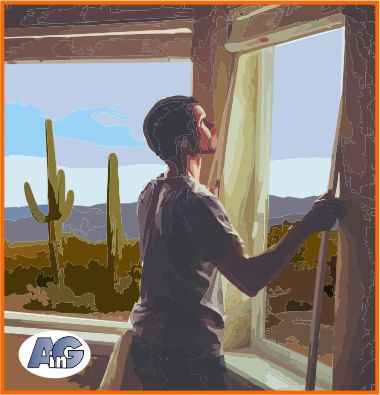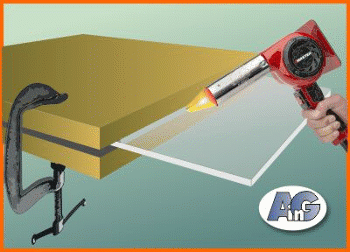Plexiglas® is the trade name for a type of acrylic sheet, made by the German company Roehm. It is a plastic material that is lightweight and shatter-resistant. Plexiglass is often substituted for glass, due to its similar appearance and properties. But what exactly is plexiglass used for?
The properties of strength & clarity make plexiglass a good substitute for glass for Covid barriers, sneeze shields, aquariums, greenhouse windows, and more.
Plexiglass has come into its own during the plague years of Covid and worldwide production increased over 300 % in 2020-21. Grocery stores and pharmacies have installed clear plexiglass panels at checkout registers to limit the viral spread between customers and workers. Businesses and offices use plexiglass partitions and barriers between desks or even sinks.
The main uses of plexiglass take advantage of its strength, light weight and transparency. Principle functions are substitutes for glass in protective screens, sneeze shields, windows, skylights, aquariums, and aircraft windshields
As an Amazon Associate, I earn from qualifying purchases
What is the difference between glass & plexiglass?
Glass is a unique substance made by melting silica sand with various additives to make a vast range of clear or colored, transparent, or opaque products. PLEXIGLAS® is a type of engineered plastic – and is the official trade name for what is now widely referred to as plexiglass.
The pros and cons of glass vs plexiglass are explained in detail in this post.
In summary, the differences are as follows:
- Price – glass is less expensive than acrylic
- Weight – glass is heavier than plexiglass
- Clarity – plexiglass is clearer than glass
- Strength – plexiglass is more impact resistance
- Scratching – plexiglass scratches more easily than glass
- Fabrication – plexiglass is easier to drill, saw, and cut than glass
- Yellowing – plexiglass may yellow when exposed to UV light
- UV – many types of plexiglass block UV light
The most useful attributes of plexiglass are its strength (impact resistance) and clarity. These two advantages make it an ideal substitute for glass in glazing for Covid barriers, sneeze shields, food guards aquariums, and windows. Extra strong polycarbonate (Lexan) is better suited where heavy impacts are expected – like riot shields, hockey rinks, and skylight domes.
Main uses for plexiglass sheets
Covid protection barriers
The CDC and OSHA make it clear that plexiglass barriers are not a substitute for proper physical distancing and mask-wearing but they are recommended for work situations where staff have the potential to come in contact with individuals known, or suspected, to be infected with COVID, or where the vaccination or infection status of personnel is unknown.

Plexiglass is the ideal material for Covid shields because it can be manufactured (drilled, cut, and molded to fit custom spaces and configurations. Its lightweight, clarity, and impact resistance make it a very safe material, and the extra strength of polycarbonate is not required.
The NIH (National Institutes of Health) warns that barriers may restrict airflow within a space. This is can be a problem where safety enclosures, fume hoods, and other ventilation systems are needed to control chemical & biological hazards. Barriers can also lead to a false sense of security, making people believe it is safe to remain close to others for extended times.
Barriers do provide the benefit of added droplet protection in locations with frequent contact with personnel from outside your office or place of work. When paired with physical distancing and proper face covering, reception areas may benefit from properly placed barriers. They are also a simple reminder of distancing recommendations.
Tips for the successful installation of plexiglass barriers include:
- Make the barriers larger than the breathing areas of the users
- Attach them securely to prevent tripping or falling
- Do not obstruct exit routes for use in emergencies
- Construct pass-throughs so that users will not have to bypass the barriers
Sneeze guards, partitions, food display protectors
Standards of hygiene in restaurants and bars require the use of sneeze guards and plexiglass is the recommended material.
Acrylic Adjustable acrylic sneeze guard with an aluminum frame is suitable for restaurant salad bars. 48-1/4″ length x 12.44″ depth – available on Amazon
Window glass substitute for insulation
Clear plexiglass is a great insulator. Use framed sheets as added insulation on the inside of problem windows – this is especially effective for retrofitting homes in cold climates to conserve heat and cut condensation.

Clear plexiglass for aquariums
The clarity, strength, and water resistance of plexiglass make it ideal for aquariums.
Available in various sizes, these acrylic aquariums are clearer than glass, 17 times stronger, and only half the weight! More impact resistant and less prone to chipping or cracking than glass, making it safer around children and pets.
Plexiglass for swimming pools
The extreme clarity, strength, and water resistance of plexiglass achieves its maximum potential in this sensational modern swimming pool.

Kitchen cabinet glass
Acrylic sheets are shatterproof, easy to cut to size, easy to install, and very clear. Use them to transform your dated kitchen. Sheets are also available in a range of colors for a contemporary look.
Plexiglass for wall shelves
The flexibility of plexiglass makes it unsuitable for shelving unless you choose very thick (> 1/2″), expensive material. This is because thin (1/8″ to 1/4″) acrylic (plexiglass or polycarbonate) is too bendy and will bow when loaded with even small weights.
However, the ability to be molded means that plexiglass can be made into shelving that does not need brackets. Compare the two wall shelf options below:
Price comparisons between acrylic and glass shelves
Choose ready-made shelving for wall and corner shelves if you want to save money and if the exact size is not important.
Standard size glass shelves in comparison
Glass wall shelves are more expensive because they need brackets to be attached to the wall. Compare this stylish choice from Amazon.
Many plexiglass applications are better with polycarbonate
Improvements in polycarbonate manufacture have made Lexan (polycarbonate) as transparent as plexiglass and many times stronger (it is almost unbreakable). So Lexan is the better choice where strong impacts are expected:
- Hockey rink barriers
- Skylight domes
- Greenhouse windows
- Protective glazing for church windows
- Police riot shields
- Bullet-proof windows


Money-saving tip: Glass and plexiglass are essentially the same quality in whichever shop you purchase them. So save money by using these glass-buying tips from the experts at Artistry in Glass.
Prices for 1/8″ glass v 1/8″ plexiglass
Prices for 1/4″ glass v 1/4″ plexiglass
Prices for 3/8″ glass vs plexiglass
Remember that the pricing modules above are just basic guides for custom sizes – big city costs will likely be higher and prices for standard-sized sheets may be lower.
Plexiglass and polycarbonate for hockey rinks
Acrylic sheets (plexiglass) took the place of tempered glass in ice rink shields because it is more impact resistant and also clearer. Furthermore, it bends a little on impact – therefore reducing the seriousness of injury caused by a high-speed hockey player smashing into the shield.
For many years, Lexan (polycarbonate) was not substituted for plexiglass because it could not match the optical clarity of the acrylic. However, recent manufacturing improvements have improved the transparency of polycarbonate.
The added benefit of polycarbonate is that it is up to 25% more flexible than acrylic for the same thickness of material. Increased flexibility translates into a lower risk of concussions in fast-moving hockey players. This is a very important feature for player-safety advocates.
The additional strength of polycarbonate means that thinner sheets (3/8″ rather than more than 1/2″) can be used compared to plexiglass. This thinner material further improves the flexibility of the shield and reduces the threat of player injuries.
Other benefits of polycarbonate shields are that the reduction in thickness means a reduction in weight – making installation and modification easier. Also, the virtual indestructibility of Lexan, means that shattered plexiglass shields, threatening both spectators and players, are no longer a danger.
Polycarbonate for skylights
Polycarbonate is used for prefabricated skylight domes for homes and recreational vehicles because the material is extremely impact resistant and will withstand the heaviest hailstorm.
Sun-Tek Mobile home skylight is 24″x32″, double-pane, and virtually unbreakable gray-tinted polycarbonate.
Plexiglass or polycarbonate for greenhouses
Acrylic is ideal for greenhouses because it is highly transparent, lightweight, easy for the homeowner to cut, and can withstand adverse weather conditions. Ready-made greenhouses are available on Amazon.
12′ x 10′ x 10.3′ Walk-in greenhouse is made of an aluminum frame with polycarbonate panels and includes adjustable roof vents and a sliding door. Assembles with 3-4 people in about 8 hours.
Note that polycarbonate is recommended for extra strength in areas where bad weather like large hailstones are common.
Protective glazing for stained glass windows
In this unfortunate era of senseless vandalism, stained glass windows in houses of worship are particularly vulnerable. They are fragile, brittle, easily damaged, and expensive to repair. Follow this link to learn about the care of stained glass using Lexan for protective glazing.
Conclusions
The decision to use glass or plexiglass requires careful consideration of the properties of the two materials. Study these posts and, if necessary, consult Artistry in Glass for expert advice.
All you need to know about art glass
Commissioning stained and etched glass
- Stained glass designs from Artistry in Glass
- How to commission a stained glass window – complete advice
- How to commission an etched glass window
- How to choose the best stained glass design
- Etched or stained glass – which is better for your home?
- How much does stained glass cost?
- How much does etched glass cost?
Technical information
- Is leaded glass dangerous? Learn the facts.
- How to replace broken patio table glass
- Plexiglass and glass – what are the pros and cons?
- What is plexiglass used for?
- What costs more – glass or plexiglass?
- Preservation of stained glass in churches & synagogues
- How does stained glass get colored? learn from an expert!
- Is your broken stained glass panel worth repairing?
- How to protect stained glass in religious buildings
- How to care for and clean stained glass
- How to repair cracked stained glass
- What is Dalle de Verre?
- How to repair Dalle de Verre
- What to do about bowed & sagging stained glass
- How to care for a stained glass skylight
- Can my stained glass lampshade be repaired?
- What is the difference between sandblasting & etching?
- Obscure and frosted glass – all you need to know!
- How to save money when buying glass
- Glossary of important terms used in decorative glass
- 14 Ways to sell stained glass
- What is imitation or faux stained glass?
Guides to stained glass design
- Guide for designing abstract stained glass
- Why choose abstract contemporary stained glass
- How to design a Frank Lloyd Wright-style window
- Designing a WWII-era stained glass Waco glider
- Stained glass and Black Lives Matter
- How Is stained glass used today?
Artistry in Glass was your source for antique repair in Tucson
Check out this amazing selection of informative articles:-
- Where can I get antiques repaired?
- Are broken antiques worth fixing?
- How to fix a broken picture frame
- How to repair a broken china plate
- How to repair a broken china teapot
- How to fix a broken marble slab
- How to repair a broken china coffee mug
- How to repair a 2000-year-old sculpture
- All about repairing stained-glass lampshades
- How to care for your stained glass skylight
- How to repair Dalle de Verre
- Is stained glass worth repairing?
- To repair or toss out?
- Tucson crystal & china repair a division of Artistry in Glass
- What to do with broken antiques
- Is lead crystal dangerous?
- Repairing an antique Mexican statue
- Repairing religious statues
- The history of Swarovski crystal figurines
- How to find the value of a Swarovski Crystal figurine
- Have Swarovski crystal figurines lost value since 2009?
- How to collect Swarovski annual ornaments
- How to display Swarovski crystal figurines
- How to authenticate a Swarovski crystal figurine
- How to display Swarovski annual ornaments
- How to clean Swarovski crystal figurines
- How to repair a Swarovski crystal mouse
- How to repair a Swarovski annual ornament
- How to repair a Swarovski crystal train set
- Fixing broken wine glass stems
- How to clean cloudy glasses
- Why do wine glasses have stems?
- Swarovski Crystal Figurines
- How to repair a chip in a wine glass
- How to fix a scratched glass tabletop
- How to replace a broken patio tabletop














